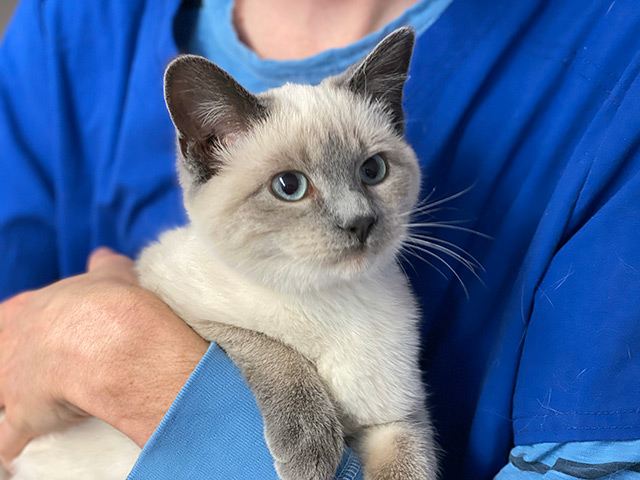Rattlesnakes and the Rattlesnake Vaccine
by Dr. Deborah Stump
Anyone who has ventured outdoors in a dry and rocky area of Colorado has likely been much closer to a Western or Prairie rattlesnake (Crotalus viridis viridis) than she may have realized. Prairie rattlesnakes prefer dry areas with moderate vegetation and can be seen basking in the sun, sometimes stretched out on pavement or across a dirt path when the temperatures are to their liking, between 50° F and 80° F. When the temperature is outside this range, the snakes move inside structures, into rock crevices, or into shallow burrows made by other animals. The primary food source for rattlesnakes are small rodents such as mice and rats but squirrels, rabbits, prairie dogs, amphibians and other reptiles have also been known to end up as a meal. These snakes use communal den sites during certain times of the year and here a mature female can give birth to as many as 12 live young.
Since these animals are common in our environment, awareness and avoidance is of utmost importance. Rattlesnakes are very good at coiling tightly and lying perfectly still to avoid being spotted. Their very distinctive warning system, the rapid shaking of the rattle at the end of their tail, is often not used unless they feel they have been seen. When enjoying your time outside in areas that may be snake habitat, never step or put your hands in a place where you can’t see. If you encounter a snake, always assume it is alive and capable of moving quickly. Dogs are safest on a leash so they can be prevented from closely investigating.
Rattlesnake venom is basically modified saliva produced by glands found beneath and behind the eyes and ejected through hollow fangs when the snake strikes and bites. This venom is composed mostly of proteins that have various toxic effects including damage to blood vessels, damage to the cell membrane of blood cells, damage to muscle cells and alterations in the blood’s ability to clot. Rattlesnake bites to people and animals always require immediate medical attention. Bites have been documented in many domestic species and even in captive elk. Bites can be fatal but with proper treatment, most victims survive.
In horses and cattle, facial bites are common and can result in severe swelling that interferes with the animal’s ability to breath. This is most effectively treated soon after the bite before the nasal passages are blocked. Horses commonly experience damage to the heart muscle. Long term follow-up is necessary as the cardiac dysfunction may be permanent.
A rattlesnake vaccine is available for horses and for dogs. The vaccine is made of proteins found in the venom of the Western Diamondback rattlesnake (Crotalus Atrox), a snake related to the Prairie rattlesnake. Studies conducted by the company manufacturing the vaccine have shown that antibodies produced by vaccinated dogs and horses are able to neutralize Prairie rattlesnake venom as well but to a lesser degree than neutralization shown to Western diamondback venom. Veterinarians have reported to the company that in their experience vaccinated dogs seem to have less pain, less swelling, and a decrease in permanent injury after being bitten.
Even vaccinated animals need to be treated as soon as possible after being bitten by a rattlesnake. Medical treatment for an animal following a rattlesnake bite is directed toward managing pain and swelling together with supporting the heart and blood vessels as the toxin takes effect and is subsequently broken down and removed by the body’s immune system. Antivenom can also be a first line treatment and is most effective when administered in the first few hours after the bite. Antivenom is made by injecting sheep with rattlesnake venom, allowing the sheep to mount an immune response, and finally harvesting and purifying the sheep’s anti-snake venom antibodies. Both the rattlesnake vaccine and the antivenom treatment consist of foreign proteins and can therefore cause adverse reactions of their own.
Although rattlesnake bites can and do occur, they are rare compared to number of people, animals and snakes that are living in beautiful Colorado. Take appropriate precautions to protect yourself, your family and your animals. If you have further questions about rattlesnake bites and your pets, your veterinarian has valuable information about prevention and treatment options.
